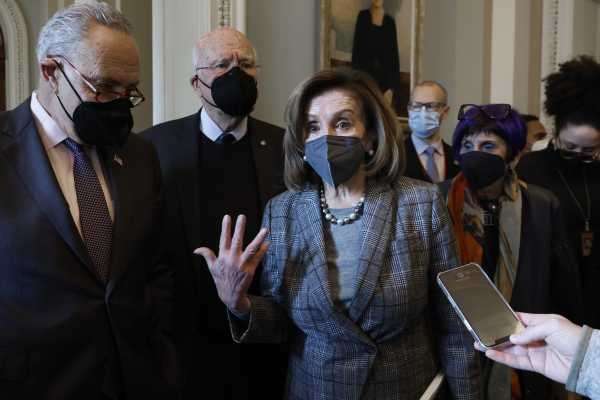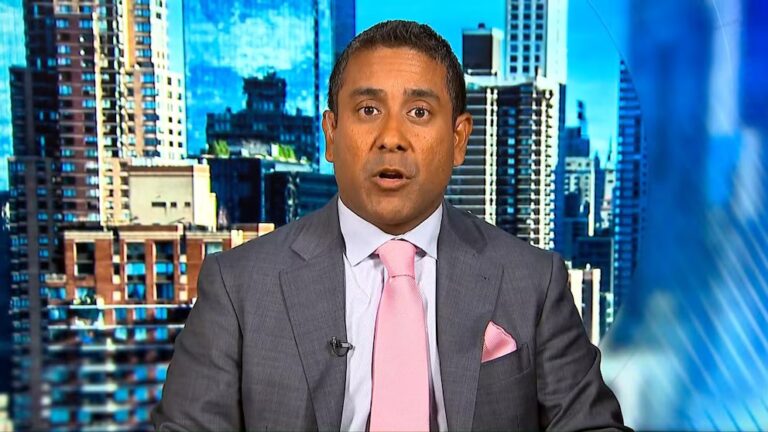
Congress passed a continuing resolution (CR) Thursday to fund the government through March 11, averting a possible shutdown ahead of a Friday deadline. But it’s the third CR since the October 1, 2021, start of the 2022 fiscal year, exemplifying Congress’s habit of procrastinating on the annual budget appropriation process.
Thursday’s CR is mostly good news, since shutdowns are harmful and a CR gives Congress more time to strike an appropriations deal, at least in theory. But it’s also a legislative punt which prevents the government from moving forward with a new set of priorities, and instead leaves it stuck with an outdated budget from the Trump era.
Despite the obvious drawbacks to short-term funding measures, they’re commonplace in Congress. With a few exceptions, at least one has been enacted almost every fiscal year since 1977, with the exceptions of 1989, 1995, and 1997. That means that Congress has failed to pass a budget by October 1 almost every year for 45 years.
All CRs, however, aren’t created equal. Some are short-term measures to buy Congress a bit more time to put the finishing touches on appropriations bills; others can stretch for months over the course of back-to-back, short-term funding measures, keeping funding levels frozen long past the beginning of the new fiscal year.
That’s the case with Friday’s measure — the third of this fiscal year, following two other short-term measures signed by President Joe Biden last year — and Congress has even passed back-to-back CRs covering an entire fiscal year before, in 2007, 2011, and 2013, according to a Congressional Research Service report.
There are consequences to Congress’s procrastination: those back-to-back, multi-month CRs can create serious funding problems and program freezes for government agencies, and in such a divided Congress, it’s not clear when a new appropriations bill will pass.
Part of the problem is that the CR mechanism has become ingrained into the budget process, Mark Harkins, a senior fellow at Georgetown University’s Government Affairs Institute, told Vox. At this point, he said, CRs are “seen as standard operating procedure,” although “nobody likes them, they’re not positive.”
“It’s almost as if, every October 1, you’re essentially furloughed at your current salary,” Harkins said, making it difficult to plan for the future.
As Vox’s Li Zhou pointed out Thursday, the latest CR means that government agencies are still operating on a budget from December 2020. Not only is that budget insufficient to meet the funding needs of major portions of the government, such as the Defense and Transportation departments, but the use of the CR prevents the implementation of new programs from legislation Congress has already passed, like the infrastructure bill. Without individual appropriations bills or an omnibus bill that accounts for all of the programs and funding needed for different agencies, the government can’t get started on a number of major projects despite the clear need for infrastructure upgrades and bipartisan support for the legislation.
In addition to holding up already-passed legislation, appropriations bills can have secondary, but serious, policy repercussions in their own right. One major issue with the current bill, for example, is the Hyde Amendment, a ban on using federal funds for abortion care. The amendment has been included in the appropriations process every year for decades, but Democrats hope to cut it from an eventual fiscal year 2022 funding deal.
As Alice Miranda Ollstein and Jennifer Scholtes reported for Politico last week, the amendment’s defeat is looking less likely — despite a campaign promise from President Joe Biden — as Republican Sen. Richard Shelby, the ranking member on the Senate Appropriations Committee, exerts his leverage in an evenly divided Senate. But the Hyde Amendment’s fate shows just what’s at stake when Congress doesn’t hammer out a new appropriations package.
The partisan divide in Congress is part of the problem; though Democrats have unified control of Washington — both chambers of the Congress and the presidency — they “don’t control the money,” Harkins told Vox.
That’s because appropriations bills require 60 votes in the Senate, and because Democrats have such a slim majority in the Senate — 50 seats, with Vice President Kamala Harris as the tiebreaking vote — there’s no way for them to pass an appropriations measure without the cooperation of ten Republican senators.
Continuing resolutions have become increasingly common since the 1970s
Part of the point of a CR, as Politico explained in a 2015 investigation into “CR hell,” is that it’s supposed to be so restrictive and unpleasant that it forces legislators to come up with a longer-term solution — either the 12 appropriations bills that Congress is supposed to pass each fiscal year to fund the government, or an omnibus package that wraps up all of those bills into one.
As the Center for American Progress documented in 2018, the process by which Congress is supposed to pass and enact those bills is outlined in the 1974 Congressional Budget Act.
Theoretically, each of 12 separate appropriations bills should get passed before the October 1 deadline. The last time that all of the appropriations bills were actually passed on time, however, was fiscal year 1997 (there were 13 separate appropriations bills at the time).
More commonly, Congress now uses omnibus bills, which bundle multiple appropriations measures into one package, to fund the government. But even those can be difficult to achieve, resulting in yet more short-term funding measures.
In the political reality of 2022, Harkins told Vox, there’s little impetus make sure that the appropriations process works as intended in the Congressional Budget Act, because there are no consequences for legislators who stymie that process.
“It’s not a systemic problem, it’s an operator problem,” Harkins said. “And those operators” — members of Congress, and specifically senators — “have to be willing to compromise.”
This year, Harkins told Vox, the stakes are particularly high. Given the likelihood that Republicans will take back at least one chamber of Congress in the midterm elections in November, the 2022 appropriations package “could be the only appropriations Democrats get. That’s why this battle has been so pitched,” he said.
It’s unclear, however, what — if anything — can convince Congress to return to something more closely resembling normal order for the appropriations process. One possibility is the imminent return of earmarks — the “pork barrel” spending that members of Congress could request for projects in their districts and add to the appropriations bills. The practice was banned in 2011, but it did give legislators “a little skin in the game,” Harkins said, a reason to pass the appropriations bills.
The current deadlock over this year’s omnibus package, however, casts that into some doubt, and Harkins said that there’s a sense, too, that there has to be an undeniable reason — a trigger — to overhaul the process. In 1974, that trigger was President Richard Nixon’s overly heavy hand in the budget process and his impounding of nearly $12 billion in funds that had already been appropriated by Congress, according to the Center for American Progress.
Despite the problems that Congress’s reliance on continuing resolutions can cause, Harkins said, “I’m not sure we have that trigger yet.”
Will you support Vox’s explanatory journalism?
Millions turn to Vox to understand what’s happening in the news. Our mission has never been more vital than it is in this moment: to empower through understanding. Financial contributions from our readers are a critical part of supporting our resource-intensive work and help us keep our journalism free for all. Please consider making a contribution to Vox today.
Sourse: vox.com






